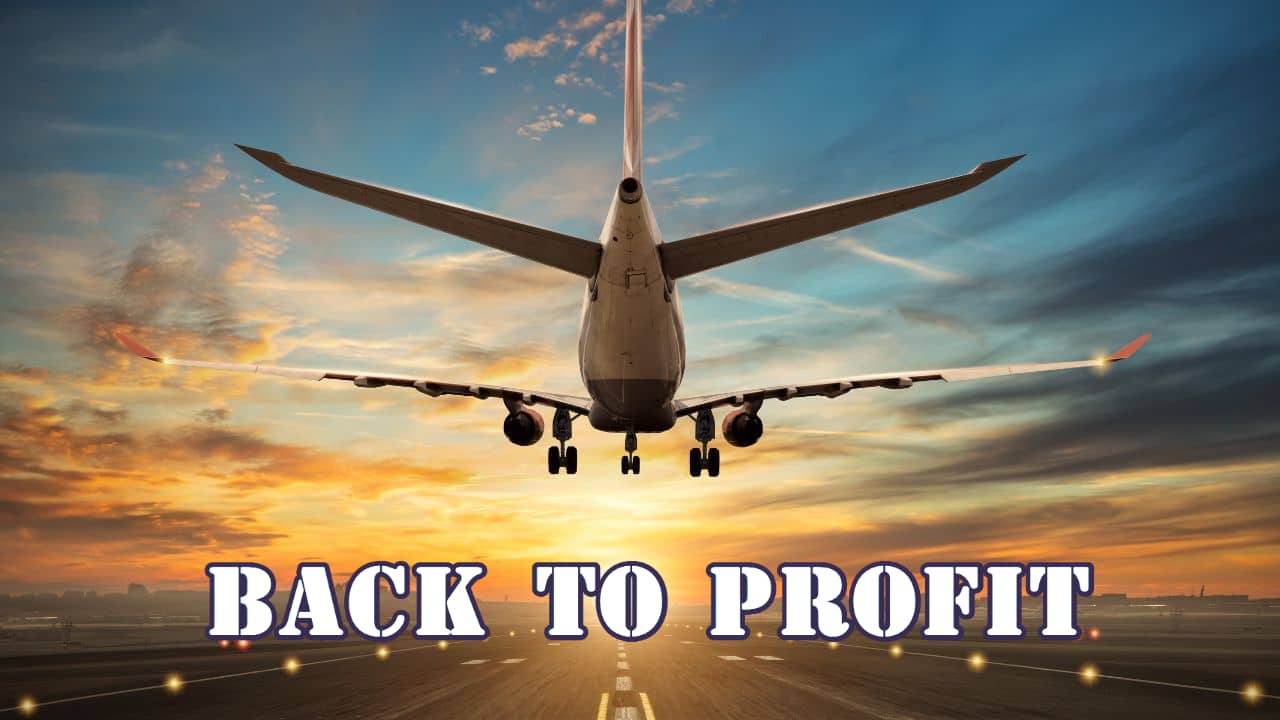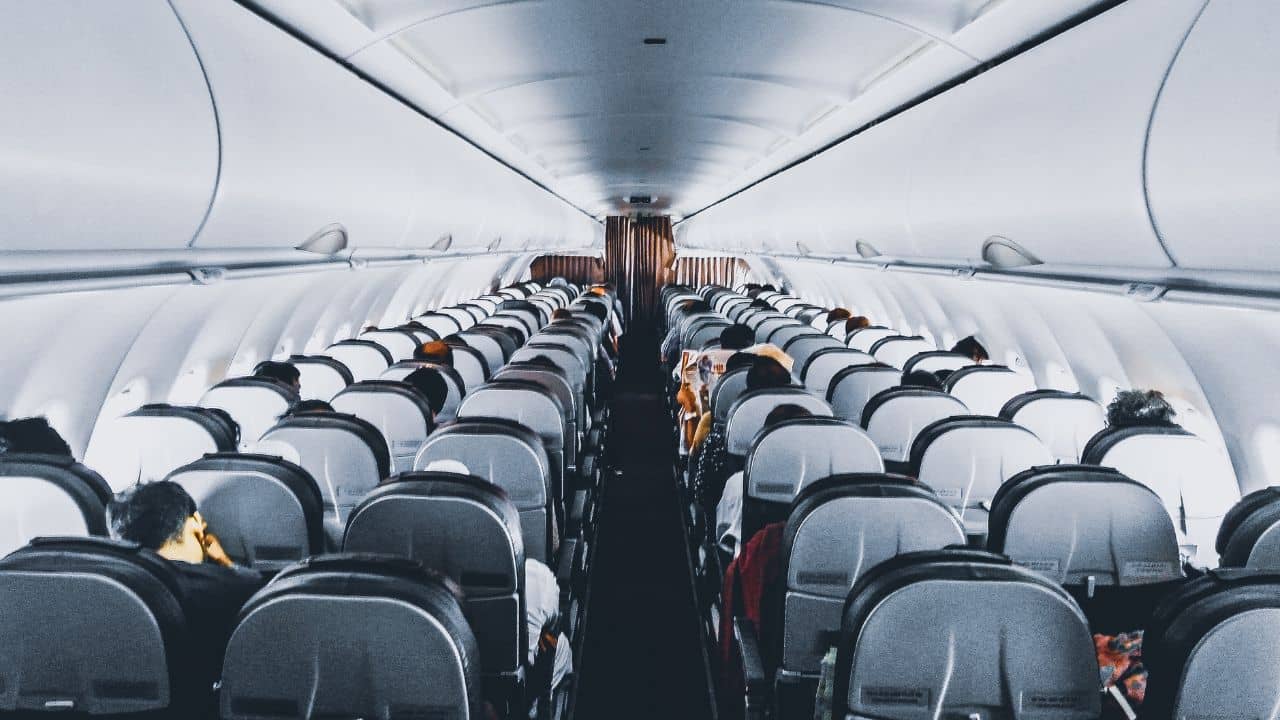
Airline Industry Profitability Outlook for 2023
5-minute read
The International Air Transport Association (IATA) announced an expected strengthening of airline industry profitability in an upgrade of its outlook for 2023.
Highlights include:
• Airline industry net profits are expected to reach US$9.8 billion in 2023 (1.2% net profit margin), which is more than double the previous forecast of US$4.7 billion (December 2022).
• Airline industry operating profits are expected to reach US22.4 billion in 2023, much improved over the December forecast of a US$3.2 billion operating profit. It is also more than double the US$10.1 billion operating profit estimated for 2022.
• Some 4.35 billion people are expected to travel in 2023, which is closing in on the 4.54 billion who flew in 2019.
• Cargo volumes are expected to be 57.8 million tonnes, which has slipped below the 61.5 million tonnes carried in 2019 with a sharp slowing of international trade volumes.
• Total revenues are expected to grow 9.7% year over year to US$803 billion. This is the first time that industry revenues will top the US$800 billion mark since 2019 (US$838 billion). Expense growth is expected to be contained to an 8.1% annual increase.
“Airline financial performance in 2023 is beating expectations. Stronger profitability is supported by several positive developments. China lifted COVID-19 restrictions earlier in the year than anticipated. Cargo revenues remain above pre-pandemic levels even though volumes have not. And, on the cost side, there is some relief. Jet fuel prices, although still high, have moderated over the first half of the year,” said Willie Walsh, IATA’s Director General.
“The return to net profitability, even with a 1.2% net profit margin, is a major achievement. First, it was achieved at a time of significant economic uncertainties. And second, it follows the deepest losses in aviation’s history ($183.3 billion of net losses for 2020-2022 (inclusive) for an average net profit margin of -11.3% over that period). It should be noted that the airline industry entered the COVID-19 crisis at the end of a historic profit streak that saw an average net profit margin of 4.2% for the 2015-2019 period.
“Economic uncertainties have not dampened the desire to travel, even as ticket prices absorbed elevated fuel costs. After deep COVID-19 losses, even a net profit margin of 1.2% is something to celebrate! But with airlines just making $2.25 per passenger on average, repairing damaged balance sheets and providing investors with sustainable returns on their capital will continue to be a challenge for many airlines,” said Walsh.

Outlook Drivers
Revenues are rising (9.7%) faster than expenses (8.1%), strengthening profitability.
Revenue: Industry revenues are expected to reach US$803 billion in 2023 (+9.7% on 2022 and -4.1% on 2019). An inventory of 34.4 million flights is expected to be available in 2023 (+24.4% on 2022, -11.5% on 2019).
• Passenger revenues are expected to reach US$546 billion (+27% on 2022, -10% on 2019).
With COVID-19 restrictions now removed in all major markets, the industry is expected to reach 87.8% of 2019 levels of revenue passenger kilometers (RPKs) for the year, with strengthening passenger traffic as the year progresses.
The high demand for travel in many markets is keeping yields strong, with a modest 1.1% decline expected in 2023 compared to 2022 levels (following increases of 9.8% in 2022 and 3.7% in 2021).
Efficiency levels are high, with an expected average passenger load factor of 80.9% for 2023. That is very near the 2019 record performance of 82.6%.
IATA’s May 2023 passenger polling data supports the optimistic outlook, with 41% of travellers indicating they expect to travel more in the next 12 months than in the previous year, and 49% expect to undertake the same level of travel.
Moreover, 77% of respondents indicated that they were already travelling as much or more than they did pre-pandemic.
• Cargo revenues are expected to be US$142.3 billion. While that is down sharply from US$210 billion in 2021 and US$207 billion in 2022, it is well above the US$100 billion earned in 2019. Yields will be negatively impacted by two factors:
(1) the ramping-up of passenger capacity, which automatically increases available belly capacity for cargo and
(2) the potential negative effects on international trade of economic cooling measures introduced to fight inflation. Yields are expected to correct with a 28.6% decline this year but still remain high by all historical comparisons. Note that yield increases of 54.7% were recorded in 2020, 25.9% in 2021 and 7.4% in 2022.
Expenses are expected to grow to US$781 billion (+8.1% on 2022 and -1.8% on 2019).
• Jet fuel costs are expected to average US$98.5/barrel in 2023 for a total fuel bill of US$215 billion. That is cheaper than the US$111.9 / barrel previously expected (December 2022) and the average cost of US$135.6 experienced in 2022.
High crude oil prices were exaggerated for airlines as the crack spread (premium paid to refine crude oil into jet fuel) averaged more than 34% for 2022—significantly above the long-run average. As a result, fuel was responsible for almost 30% of total expenses.
In recent months, the crack spread has narrowed, and the full-year average crack spread is expected to fall to around 23%, which is more closely aligned with the historical average rate. Fuel costs will account for 28% of the average cost structure, which is still above 24% of 2019.
• Non-Fuel expenses have been controlled well by airlines despite inflationary pressures.
With fixed costs being distributed over a larger scale of activity, non-fuel unit costs per available tonne kilometre (ATK) are expected to fall to 39 cents per ATK. That is -6.4% compared to 2022 (41.7 cents /ATK) and marks a return to about pre-COVID levels. Total non-fuel costs are expected to reach $565 billion in 2023.

Risks
The economic and geopolitical environment presents several risks to the outlook.
With just US$22.4 billion of operating profit (2.8%) standing between US$803 billion of revenues and US$781 billion in expenses, industry profitability is fragile and could be affected (positively or negatively) by a number of factors.
In particular, consideration should be given to:
• Inflation-fighting measures are maturing at different rates in different markets.
Central banks are calibrating the best levels for interest rates to have a maximum cooling effect on inflation while avoiding tipping economies into recession.
An early or lower end to rate rises could stimulate markets for a stronger year-end outlook. Equally, the risk of recession remains. Should a recession lead to job losses, the industry’s outlook could shift negatively.
• War in Ukraine is not having a major impact on profitability for most airlines.
A currently unanticipated peace could carry the potential for cost improvements with lower oil prices and efficiencies from the removal or easing of airspace restrictions.
An escalation, however, would likely have negative prospects for global aviation. Already broader geopolitical tensions are weighing upon international trade, and any escalation of such tensions represents a downside risk to the industry outlook.
• Supply chain issues continue to impact global trade and business.
Supply chains are shifting to fill gaps in resilience caused by current geopolitical tensions and the challenges experienced during COVID-19.
Airlines have been directly impacted by aircraft parts supply chain ruptures which aircraft and engine manufacturers have failed to sort out. This is negatively impacting the delivery of new aircraft and the ability of airlines to maintain and deploy existing fleets.
• Regulatory cost burdens are at risk of increasing from increasingly interventionist regulators. In particular, the industry could face rising costs of compliance for increasingly punitive passenger rights regimes and regional environmental initiatives.
“Resilience is the story of the day, and there are many good reasons for optimism. Achieving profitability at an industry level after the depths of the COVID-19 crisis opens up much potential for airlines to reward investors, fund sustainability, and invest in efficiencies to connect the world even more effectively. That’s a big ‘to-do’ list to achieve with just a 1.2% net profit margin. That’s why we call on governments to keep their focus on initiatives that will strengthen safe, sustainable, efficient, and profitable connectivity,” said Walsh.
“We are resilient and have returned to profit with record speed, since the historic crisis of 2020. Per passenger though, our profit is limited to USD 2.25 in 2023, barely enough for a cup of coffee in many places…Clearly, it is time to think outside the cup,” said Marie Owens Thomsen, Senior VP & Chief Economist IATA Sustainability & Economics.
Source: The International Air Transport Association (IATA)
P.S. Easy Freight Ltd helps New Zealand importers & exporters to save money on international freight and reduce mistakes by guiding how to comply with Customs and biosecurity rules.
➔ Contact us now to learn how we can assist you.
